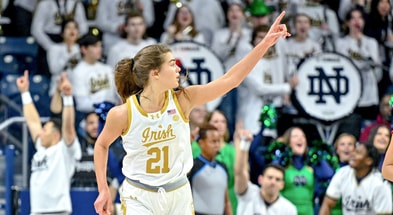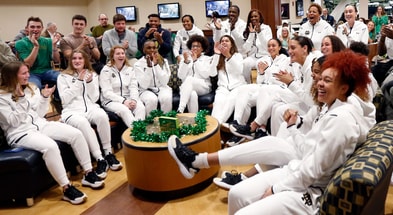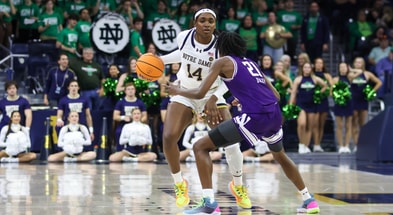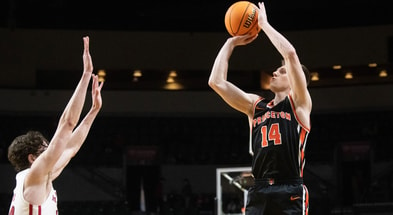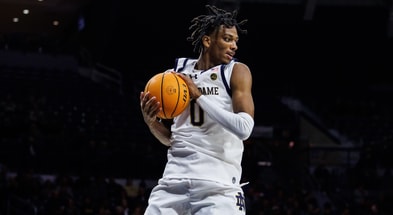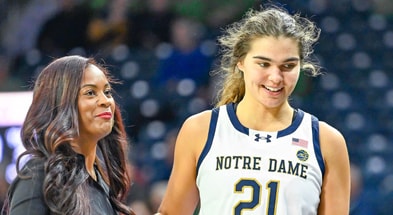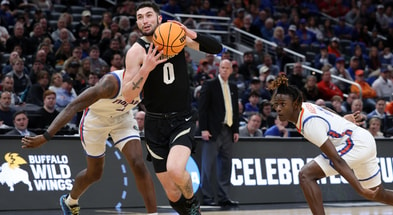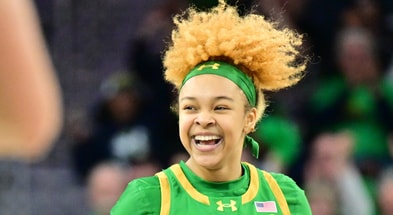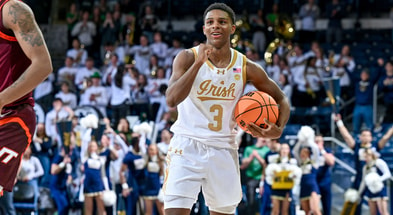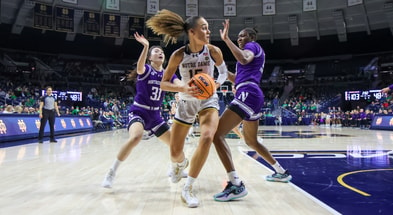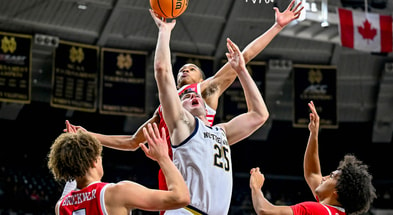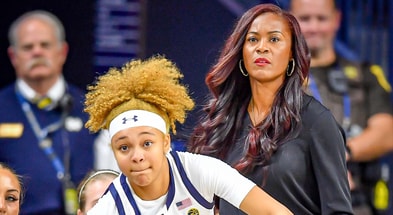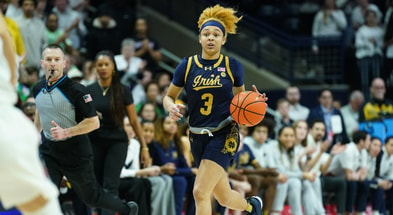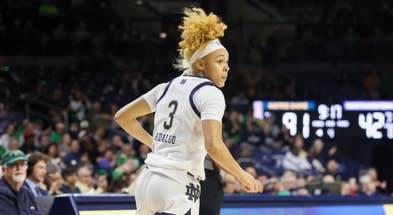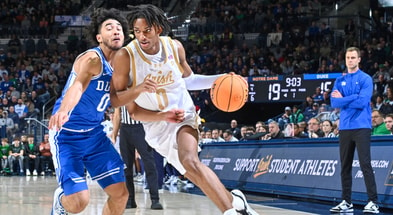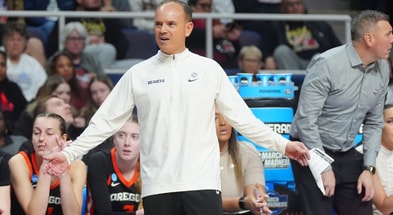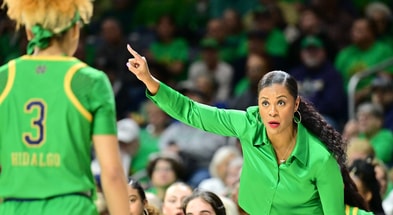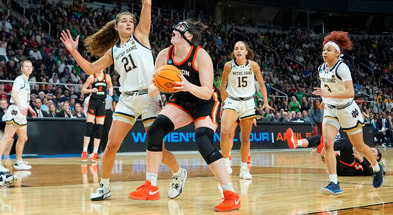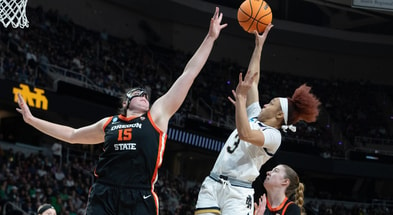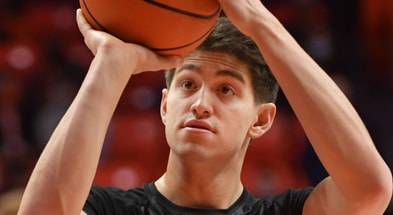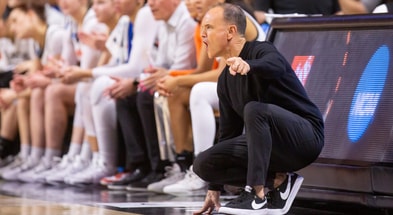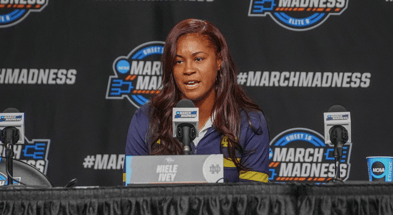Four things to know about Notre Dame NCAA Tournament First Four opponent, Rutgers
Mike Brey can still recall the trips to the Rutgers Athletic Center in the old Big East in vivid detail.
He remembers the raucous home crowd. The tense games. The visiting team’s quarters.
“You were always in the baseball locker room when you played at Rutgers,” Brey said Sunday evening. “I’d grab a bat and start swinging it around to release the stress a little bit.”
Notre Dame and the Scarlet Knights were conference mates from 1995-2013, playing 25 times in that span. All told, Wednesday’s NCAA tournament First Four game in Dayton, Ohio (9:10 p.m. ET, TruTV) will be their 34th meeting. Notre Dame holds a 20-13 edge in the series and won the last meeting in March 2013.
PROMOTION: Sign up for just $1 for first year at Blue & Gold
Brey remembers fighting and clawing for wins against Rutgers, which usually resided toward the bottom of the Big East standings but could muck up games and make their opponent miserable even in victory. Brey and Notre Dame often weathered the storm – the Irish are 14-6 against Rutgers in his tenure. For as tough as Rutgers was to play in its home gym, it was still a scuffling program that made zero tournaments in its Big East tenure.
The Scarlet Knights still willingly engage in low-scoring slugfests, but they’re no longer a bottomfeeder. This is their second straight NCAA tournament appearance. They were in line to make the field in 2020 before the tournament was canceled. They’re 18-13 overall, went 12-8 in the Big Ten and are led by sixth-year head coach Steve Pikiell.
Here are four things to know about Notre Dame’s First Four opponent.
1. Weird résumé
A question that persisted in the days leading up to Selection Sunday was how committee would treat Rutgers, which presented it with one of the more unique at-large cases in recent memory.
There are high-end wins. Six of them, to be exact. Rutgers was 6-6 in Quadrant 1 games. Those included defeats of Iowa (the Big Ten tournament champion), Illinois (Big Ten regular-season co-champion), Wisconsin (Big Ten regular-season co-champion) and Purdue (a No. 3 seed in the NCAA tournament).
For comparison, No. 2 seed Duke and No. 1 seed Arizona won six Quadrant 1 games.
So, why the First Four placement?
Start with the last two quadrants.
Rutgers took three losses in Quadrant 3 and another in Quadrant 4. Lafayette, a 9-20 team ranked 319th in the NET, rolled into Jersey Mike’s Arena (the RAC’s new name) and beat Rutgers in late November. The Scarlet Knights also lost road games to sub-100 teams UMass, DePaul and Minnesota. Seven of their 13 losses are to teams ranked 88th or worse in the NET.
RELATED:
• Initial thoughts: Reaction to Notre Dame matchup vs. Rutgers, making the First Four and more
• How Notre Dame remained productive amid a stress-filled weekend awaiting NCAA tournament fate
Rutgers’ own NET ranking (77th) is by far the lowest for an at-large team since the NCAA implemented the metric in 2019. Its high overall strength of schedule ranking (34th) contains the No. 298-rated non-conference slate.
The ceiling is clearly high. The floor is stunningly low. It is worth noting, though, the UMass and Lafayette losses were nearly four months ago.
2. Sturdy defense
Rutgers doesn’t want to play track meets with scores in the 80s. It wants tortoise races where the winner can score in the mid-60s. This is a defensive-oriented team with length and athleticism that ranks 289th in tempo. Only five teams have a longer average possession length on defense.
The Scarlet Knights were the Big Ten’s No. 4 defense in conference play, per KenPom, a number buoyed by a league-best steal rate and No. 2 finish in block rate. On the season, they’re 49th in two-point percentage allowed (46.5).
Rutgers has played man defense on 95 percent of its possessions. It has pressed in either man or zone defense on 10 percent of possessions.
Individually, the lineup has several standout defenders. Caleb McConnell, a 6-7, 200-pound senior forward, was the Big Ten’s Defensive Player of the Year. He ranks 15th nationally in steals per game (2.2) and can guard five positions.
Elsewhere, sophomore center Cliff Omoruyi (6-11, 240 pounds) is a strong rim protector and interior defender who averages 1.3 blocks per game. He’s one of the Big Ten’s best defensive rebounders. Senior wing Ron Harper Jr. (6-6, 246) has the length to disrupt passing lanes and strength to guard post-ups.
3. High three-point volume caters to Notre Dame
One hole in Rutgers’ defense caters well to Notre Dame’s offense.
The Scarlet Knights allow opponents to take 40.2 percent of their shots from three-point range, which ranks 263rd nationally. They’re 229th in opponent assist rate. They are OK with helping off shooters to crowd the paint.
That’s good news for Notre Dame, whose offense is built on three-pointers and assisted baskets. The Irish are 55th in three-point volume (43.1 percent of field goal attempts), 72nd in assist rate (55.4 percent of baskets are assisted) and shot an ACC-best 39.6 percent on threes in conference play. They’re tied for 15th overall in three-point percentage.
4. Multiple scorers
Rutgers’ offense starts with Harper, a three-level scorer who averages a team-best 15.9 points per game. He’s making 39 percent of his three-pointers and attempts more than five per game. He can get downhill in ball-screen sets. He occasionally posts up. He’s the team leader in free throw attempts. He averaged 20.5 points in Rutgers’ wins over Purdue, Iowa, Illinois and Wisconsin. He’s taking the shots in crunch time.
Harper, though, is one of three double-figure scorers on the roster. Fifth-year senior guard Geo Baker is averaging a career-best 12.4 points per game. He’s a streaky scorer who shoots a middling 40 percent from the field, but his hot streaks can flip a game. Omoruyi (11.8 points per game) shoots 61.8 percent and scores nearly all his points around the basket.
The straw that holds it all together is junior Paul Mulcahy, a 6-6 guard who averages a team-best 5.3 assists per game and is a career 36 percent three-point shooter.
